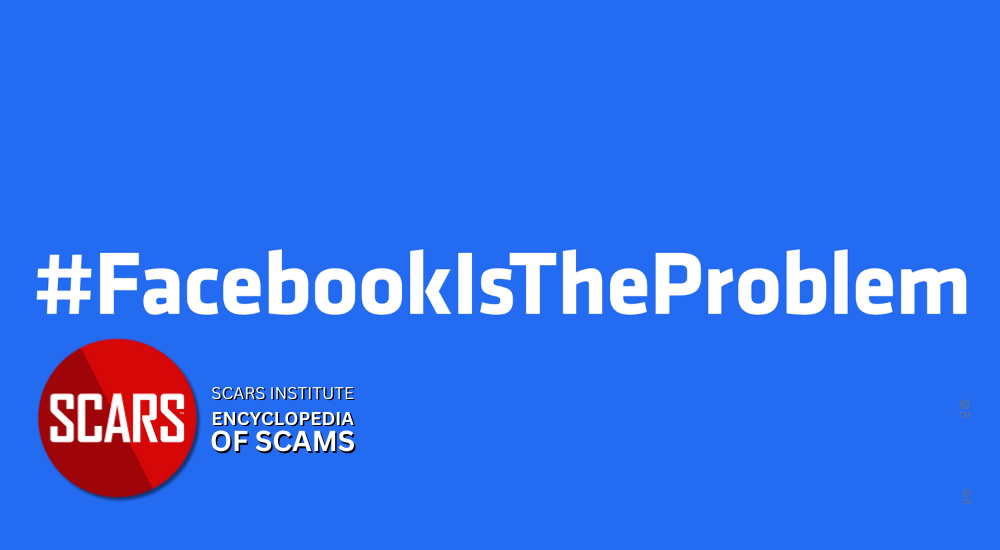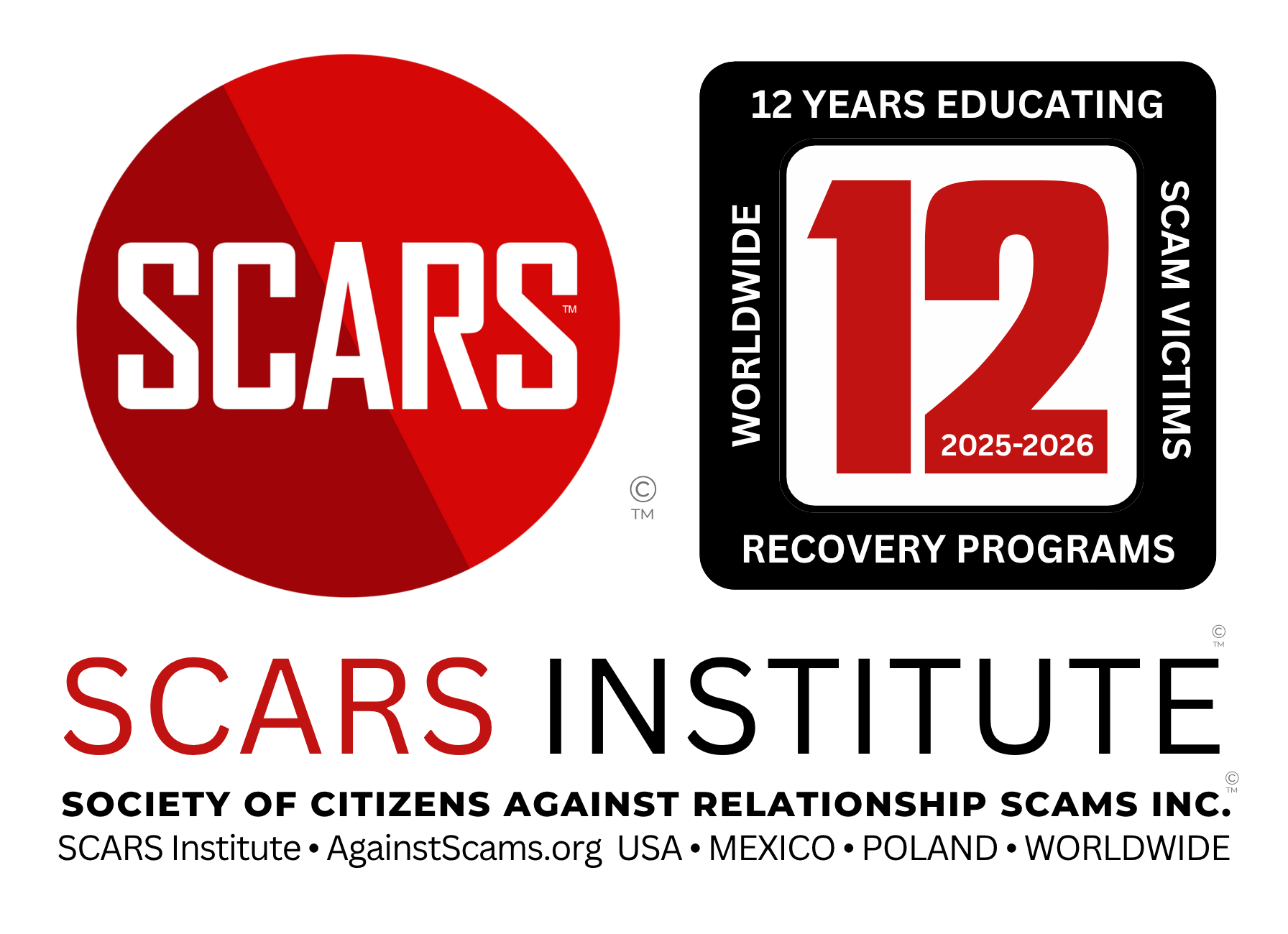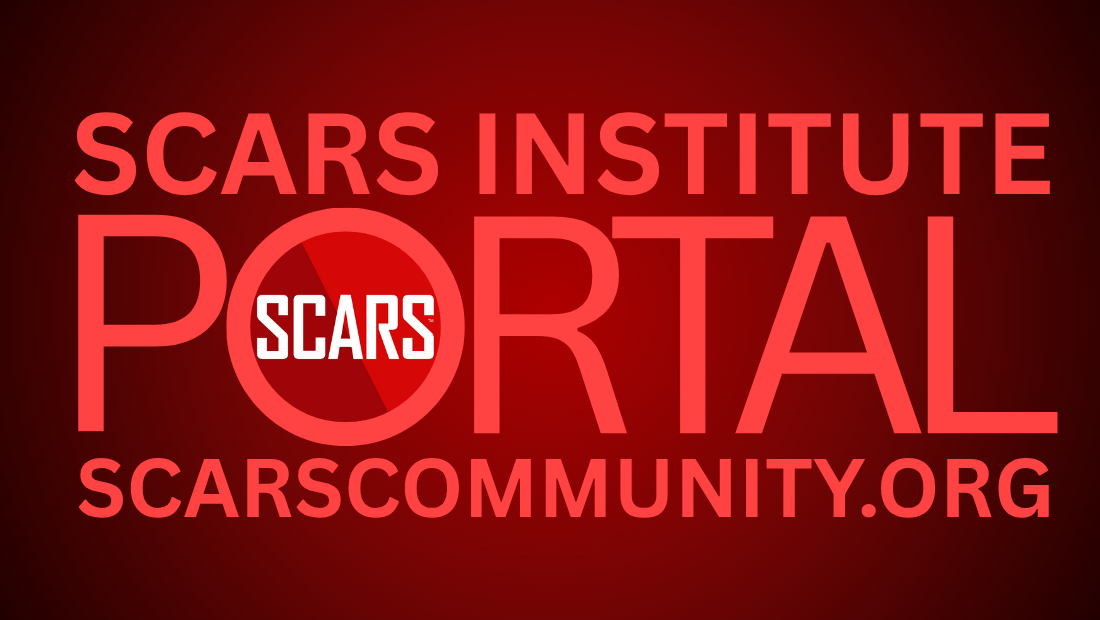Facebook’s Algorithm Monster Actively Works Against Scam Victims
Facebook’s Algorithm is One of the Worst, Because It Actively Works Against Scam Victims Trying to Find Reliable Information and Professional Support
Social Media Survival – A SCARS Institute Insight
Author:
• Tim McGuinness, Ph.D., DFin, MCPO, MAnth – Anthropologist, Scientist, Director of the Society of Citizens Against Relationship Scams Inc.
Article Abstract
Facebook’s Algorithm Monster: How It Hurts Scam Victims Seeking Support
Facebook’s algorithm, designed to prioritize engagement and relevance, often works against scam victims seeking reliable information and support. While users may follow pages or join groups, the platform decides who sees posts based on engagement metrics like likes, comments, and shares—limiting visibility for content that doesn’t spark immediate interaction. For scam victims, this can mean crucial resources and support networks remain hidden, buried by the algorithm in favor of more engaging or sensational content.
Organic reach—the natural visibility of posts—has plummeted in recent years, forcing publishers and support organizations to rely on paid promotion, which may not always be feasible. Scammers’ manipulative content often thrives because it generates emotional reactions and shares, while posts offering recovery guidance may struggle to gain traction due to their informative nature. Facebook’s algorithmic focus on “meaningful interactions” inadvertently punishes content that victims genuinely need, as low engagement signals irrelevance, further reducing reach.
To counteract this, active participation from users is vital. By consistently engaging—liking, sharing, and commenting on posts—followers can help essential content surface in News Feeds, allowing more victims to find the support and resources they need. In a system dominated by algorithms, even small actions can make a significant impact in keeping scam recovery communities visible and accessible.

Facebook’s Algorithm Monster is One of the Worst: It Actively Works Against Scam Victims Trying to Find Reliable Information and Professional Support
The Facebook algorithm is a sophisticated system designed to personalize each user’s News Feed by determining which posts appear and in what order, regardless of what they like or follow. Its primary goal is to enhance user engagement by showcasing content that aligns with individual interests and behaviors – even if it is not really what they want.
What Exactly is Reach?
Facebook Reach refers to the total number of unique users who have seen your content on Facebook over a given time period. It measures how far your post, page, or group spread in terms of visibility. Reach is not the same as engagement; while engagement tracks likes, comments, shares, or clicks, reach simply measures the number of people who have seen the post at least once.
It is not the same as followers or group members. Just because you like a page or are a member of a group, reach determines how many people will see what is published. It normally will be a small subset of the actual followers or group members. Facebook’s algorithm censors what you get to see based on your participation.
Types of Facebook Reach
Organic Reach
-
-
- Definition: The number of people who see a page, group, or publisher’s content naturally without paid promotion.
- How It Works: Organic reach is determined by Facebook’s algorithm, which prioritizes content IT DECIDES as relevant or engaging. Content that sparks meaningful interactions (likes, comments, shares) is more likely to appear in users’ or followers’ News Feeds.
- Challenges: Organic reach has massively declined over the years due to the increasing volume of content and Facebook’s focus on prioritizing personal connections over page content and forcing publishers to pay for advertising to compensate for reach reductions – in effect extortion.
-
Paid Reach
-
-
- Definition: The number of people who see a page, group, or publisher’s content as a result of paid advertising.
- How It Works: When a publisher boosts a post or runs an ad campaign, Facebook delivers that content to a targeted audience based on the publisher’s chosen budget, demographics, and settings.
- Benefits: Paid reach ensures that the content reaches a larger and more defined audience, bypassing some of the limitations of organic reach – this is also why many view it as extortion.
-
Viral Reach
-
-
- Definition: The number of people who see the publisher’s content because someone else interacted with it (e.g., a friend shares, likes, or comments on the publisher’s post).
- How It Works: Viral reach occurs when the publisher’s content generates enough engagement that it gets shared beyond its immediate audience, reaching new users through social interactions.
-
Why Facebook Reach Matters
-
- Visibility: Reach determines how many people are exposed to the publisher’s content, making it a critical metric for brand awareness. This is the critical means of survival for Facebook publishers.
- Performance Indicator: Analyzing reach helps measure the effectiveness of the publisher’s content strategy—whether the publisher’s posts resonate with their audience or get buried.
- Potential Engagement: Higher reach increases the likelihood of engagement, as more people are exposed to the publisher’s post.
- Advertising Effectiveness: For paid campaigns, reach shows how well the publisher’s ad budget is performing and the extent of the publisher’s campaign’s visibility.
How Facebook Calculates Reach
Facebook Reach is calculated as the number of unique views of a post. If the same user sees the publisher’s post multiple times, it counts as one “reach” (but multiple impressions). Facebook uses its News Feed algorithm to determine who sees the publisher’s post based on factors like:
-
-
- Relevance: How likely the content is to engage specific users.
- Engagement History: A user’s past interaction with your page or similar content.
- Content Quality: Whether the post is informative, authentic, and engaging.
-
Reach vs. Impressions
-
- Reach: Unique users who have seen the publisher’s content.
- Impressions: The total number of times the publisher’s content is displayed, including multiple views by the same user.
Factors That Affect Reach
-
- Content Type: Videos, live streams, and interactive posts often generate higher reach.
- Engagement: Posts with more likes, comments, and shares are shown to more people. This is why participation if ‘life or death’ to a publisher.
- Post Timing: Content posted when your audience is most active increases reach.
- Competition: A crowded News Feed can limit the publisher’s content’s organic reach.
Facebook Reach measures how many unique people see the publisher’s content, serving as a key indicator of visibility and performance. While organic reach has become increasingly difficult (impossible) to achieve, combining engaging content with paid strategies can help boost the publisher’s reach, ensuring the publisher’s message gets in front of the right audience. [This is the definition of extortion]
Key Factors Influencing Page, Group, and Publisher’s Post Reach:
- User Engagement: Posts that receive higher levels of interaction—such as likes, comments, shares, and watch time—are more likely to be prioritized. The algorithm assesses the likelihood of a user engaging with a post based on their previous interactions and the nature of the content.
- Content Type and Format: The algorithm favors a diverse mix of content types, including videos, photos, links, and text posts, to ensure users encounter a variety of posts in their feed. Notably, Facebook Reels are given prominence, with the algorithm considering factors like watch time and completion rates to determine their reach.
- Recency: Timely content is given precedence, with newer posts more likely to appear in users’ feeds to keep the information current and relevant.
- Relationships and Interactions: Content from friends, family, and pages with which a user has frequent interactions is prioritized, as the algorithm predicts that users are more interested in updates from these sources.
- Predicted Value and Relevance: The algorithm evaluates the potential value of a post to a user, considering factors such as past behavior, the post’s popularity, and the user’s interests, to predict how engaging the content will be.
What is Facebook’s Algorithmic Process:
The Facebook algorithm operates through a four-step process:
- Inventory: It compiles all available content that could be displayed to a user, including posts from friends, pages followed, and groups joined.
- Signals: These are data points about the content, such as who posted it, the type of content, its age, and the interactions it has received. Signals help the algorithm assess the post’s potential relevance to the user.
- Predictions: Based on the signals, the algorithm predicts the likelihood of a user engaging with the post, such as commenting or sharing.
- Relevance Score: Each post is assigned a score that determines its priority in the user’s feed, with higher scores indicating more relevant content.
How Facebook Penalizes Publishers If Their Readers Do Not Participate
Facebook’s algorithm penalizes page content with low engagement (such as few likes, comments, or shares) by reducing its reach and prioritizing other, more engaging content. This occurs because the algorithm aims to deliver the most relevant and valuable content to each user regardless of what pages they follow or groups they are a member of, and low engagement signals that the post is not resonating with audiences.
Here’s a detailed breakdown of how and why this happens:
Engagement Signals Are Key
Facebook evaluates the engagement signals a post receives shortly after it is published. These include:
-
-
- Likes and reactions
- Comments
- Shares
- Link clicks
- Watch time (for videos)
-
When a post receives very few likes or other forms of engagement, Facebook interprets it as content that is not interesting, valuable, or engaging to the audience.
Low Engagement Lowers Relevance
The Facebook algorithm assigns each post a relevance score based on how likely it is to spark meaningful interactions. Posts with higher scores get shown to more users, while those with low engagement quickly get buried in the News Feed. This is completely beyond the publisher’s control and is instead in the control of the publisher’s audience.
When few people engage with a post, the algorithm views it as:
-
-
- Low Quality or Irrelevant: Facebook prioritizes posts that keep users on the platform and interacting with content.
- Not Worth Promoting: Since the post hasn’t gained traction, Facebook deprioritizes it in favor of posts from other pages, people, or groups that perform better.
-
This results in:
-
-
- Reduced Organic Reach: Fewer people will see the post, and subsequent posts from the same page may also be shown to a smaller audience.
-
Impact on Future Posts
Facebook’s algorithm considers historical engagement for pages. If a page consistently posts content that receives little to no interaction, Facebook may deprioritize future posts from that page in users’ feeds.
This creates a vicious cycle:
-
-
- Low engagement leads to lower reach.
- Lower reach means fewer opportunities for future posts to be seen and engaged with.
- This further decreases the page’s organic visibility over time.
-
Encouraging “Meaningful Interactions”
Facebook prioritizes content that generates meaningful interactions (comments, conversations, and shares). Low engagement suggests the post isn’t fostering this type of activity, which signals the algorithm to demote the content.
For example:
-
-
- A post with only a handful of likes but no comments or shares will receive less promotion than a post with active conversations or shares.
- Even “like-only” engagement is now less impactful than comments and shares, as Facebook favors content that stimulates deeper engagement.
-
The Algorithm and Page Relationships
If a page continually produces low-engagement content, its posts may no longer be shown to followers because Facebook assumes they are uninterested. This leads to:
-
-
- Followers seeing posts from other pages or friends instead.
- The page struggling to regain visibility unless engagement improves.
-
How to Counteract Low Engagement Penalties
To avoid Facebook’s penalties for low engagement, page visitors and group members must increase interaction:
- Create Quality Content: Ensure posts provide value, entertainment, or information that resonates with your audience.
- Encourage Conversation: Ask questions, create polls, or post topics that spark discussions.
- Use Engaging Formats: Videos, live streams, and interactive content (such as stories) tend to generate higher engagement.
- Post When Your Audience is Active: Share content when your followers are online to maximize visibility and early engagement.
- Respond to Comments: Actively engage with users who comment on your posts to foster interaction and boost your content’s reach.
Facebook penalizes page content with few likes and low engagement by reducing its reach and limiting visibility in the News Feed. The algorithm prioritizes content that sparks meaningful interactions, and low engagement signals irrelevance. This makes it crucial for page owners to focus on creating high-quality, engaging content that resonates with their audience to maintain visibility and build lasting relationships.
Help the Facebook Pages, Groups, and Publishers You Like
You can help Facebook pages, groups, and publishers you like and follow to survive and thrive despite the platform’s challenging demonic algorithms. Your active participation is key.
If you do not care enough to help then your favorite pages, groups, and publishers will eventually give up on Facebook and you. At a certain point, it no longer justifies the effort needed to support you.
The algorithm prioritizes meaningful interactions and engagement, so visitors can take several specific actions to boost their favorite pages’ visibility and support their content.
Here’s what you can do:
Engage Actively with the Content
-
- Like and React: Don’t just scroll past content—click the Like button or use other reactions (Love, Care, Wow, etc.). Reactions carry more weight than passive views.
- Comment: Take the time to leave a meaningful comment, even if it’s short. Facebook favors content that sparks conversations, so comments help push posts higher in News Feeds.
- Share Posts: Sharing is one of the most powerful forms of engagement. When you share posts, they reach your own audience, extending the page’s organic reach.
- Tag Friends: If you think someone would enjoy or benefit from a post, tag them in the comments. This not only boosts engagement but also helps bring new viewers to the page.
Prioritize the Page’s Content in Your Feed
-
- Change Your Preferences: Go to the page, click the “Following” button, and select “Favorites”. This ensures the page’s posts appear at the top of your News Feed.
- Enable Notifications: Turn on notifications for the page to get alerts whenever new content is posted. This allows you to interact early, which helps the algorithm push the post to more people.
Watch and Interact with Videos
-
- Watch Full Videos: Facebook rewards pages/groups when people watch videos for longer durations. Avoid skipping through videos and let them play to completion whenever possible.
- React and Comment on Videos: Engaging while watching videos—commenting or using reactions—signals to Facebook that the content is valuable and engaging.
Be Consistent with Your Interactions
-
- The Facebook algorithm takes consistency into account. Regularly interacting with a page (liking, commenting, sharing, etc.) signals that you value its content, increasing the likelihood of future posts appearing in your feed.
- Don’t disappear for long periods—support the page frequently so Facebook keeps it visible.
6. Interact Beyond Posts
-
- Engage with Stories: Watch and interact with Facebook Stories by reacting or replying to them. Stories often have a higher chance of visibility than regular posts.
- Visit the Page/Group Directly: Go to the page or group – don’t just rely on your feed, browse posts, and engage with multiple pieces of content. This signals interest to Facebook.
Spread the Word
-
- Encourage your friends and followers to like, follow, and engage with the page or group. Word-of-mouth recommendations help pages build their audience and overcome algorithm challenges.
- Share your favorite pages’ links in groups or on your own timeline to attract new supporters.
Respond to Polls, Questions, and Prompts
-
- Pages often post questions, polls, or calls for opinions to spark interaction. Taking a moment to respond helps create the “meaningful interactions” that Facebook values.
Avoid Passive Scrolling
-
- Facebook tracks passive behaviors like scrolling past posts without interacting. To help a page survive, avoid ignoring its content—take a moment to react, comment, or engage.
Why This Matters
Facebook’s algorithm favors content that drives active engagement—likes, shares, comments, and reactions. When you interact with a page you care about, you’re not just supporting its content—you’re helping it reach a wider audience and thrive in an algorithm-driven world.
By participating actively and consistently, you can ensure that the pages you love don’t get buried by the algorithm and can continue to deliver the content that matters to you.
Every click, share, and comment counts!
-/ 30 /-
What do you think about this?
Please share your thoughts in a comment below!
Article Rating
Table of Contents
- Facebook’s Algorithm is One of the Worst, Because It Actively Works Against Scam Victims Trying to Find Reliable Information and Professional Support
- Article Abstract
- Facebook’s Algorithm Monster is One of the Worst: It Actively Works Against Scam Victims Trying to Find Reliable Information and Professional Support
- What Exactly is Reach?
- Key Factors Influencing Page, Group, and Publisher’s Post Reach:
- What is Facebook’s Algorithmic Process:
- How Facebook Penalizes Publishers If Their Readers Do Not Participate
- How to Counteract Low Engagement Penalties
- Help the Facebook Pages, Groups, and Publishers You Like
RATE THIS ARTICLE?
LEAVE A COMMENT?
Thank you for your comment. You may receive an email to follow up. We never share your data with marketers.
Recent Comments
On Other Articles
- on Dating Scammers Paradise: Ivory Coast: “The Ivory Coast romance scam is still going on. It seems that local authorities don’t handle the issue effectively!” Dec 10, 02:17
- on The SCARS Institute Top 50 Celebrity Impersonation Scams – 2025: “Thank you – we will.” Dec 7, 11:41
- on The SCARS Institute Top 50 Celebrity Impersonation Scams – 2025: “You should add Sean Bean to your list of Celebrities. This one is very good, and persistent. He will be…” Dec 2, 12:07
- on How You Think & Talk About Your Scam Affects Your Recovery: “I have hung on to the scams for far too long. With the intervention of an all-merciful God, I have…” Nov 6, 22:13
- on Disengaging From A Fake Scam Relationship: “Taci, you may want to join our new support community at www.SCARScommunity.org” Nov 6, 03:01
- on Disengaging From A Fake Scam Relationship: “This particular article helped me discover the many things I did wrong the first time I was scammed. I should…” Nov 5, 22:49
- on About the SCARS RomanceScamsNOW.com Website – 24 Years Published: “It was unavailable for a few days, but it is available again. If he would be interested, he is welcome…” Nov 5, 00:59
- on About the SCARS RomanceScamsNOW.com Website – 24 Years Published: “My husband has been scammed and your classes have been helping him but now he can’t seem to access them.…” Oct 26, 14:57
- on Talia Shepard – Impersonation Victim – Stolen Photos – 2024: “Hi, I’m Patrick from Belgium and I found this site by chance, so I just got to know it, and…” Oct 17, 23:46
- on Talia Shepard – Impersonation Victim – Stolen Photos – 2024: “Hallo ik ben Patrick uit Belgie en het is in verband over PayPal. Ik heb het dit jaar spijtig genoeg…” Oct 17, 23:08
ARTICLE META
Important Information for New Scam Victims
- Please visit www.ScamVictimsSupport.org – a SCARS Website for New Scam Victims & Sextortion Victims
- Enroll in FREE SCARS Scam Survivor’s School now at www.SCARSeducation.org
- Please visit www.ScamPsychology.org – to more fully understand the psychological concepts involved in scams and scam victim recovery
If you are looking for local trauma counselors please visit counseling.AgainstScams.org or join SCARS for our counseling/therapy benefit: membership.AgainstScams.org
If you need to speak with someone now, you can dial 988 or find phone numbers for crisis hotlines all around the world here: www.opencounseling.com/suicide-hotlines
A Note About Labeling!
We often use the term ‘scam victim’ in our articles, but this is a convenience to help those searching for information in search engines like Google. It is just a convenience and has no deeper meaning. If you have come through such an experience, YOU are a Survivor! It was not your fault. You are not alone! Axios!
A Question of Trust
At the SCARS Institute, we invite you to do your own research on the topics we speak about and publish, Our team investigates the subject being discussed, especially when it comes to understanding the scam victims-survivors experience. You can do Google searches but in many cases, you will have to wade through scientific papers and studies. However, remember that biases and perspectives matter and influence the outcome. Regardless, we encourage you to explore these topics as thoroughly as you can for your own awareness.
Statement About Victim Blaming
Some of our articles discuss various aspects of victims. This is both about better understanding victims (the science of victimology) and their behaviors and psychology. This helps us to educate victims/survivors about why these crimes happened and to not blame themselves, better develop recovery programs, and to help victims avoid scams in the future. At times this may sound like blaming the victim, but it does not blame scam victims, we are simply explaining the hows and whys of the experience victims have.
These articles, about the Psychology of Scams or Victim Psychology – meaning that all humans have psychological or cognitive characteristics in common that can either be exploited or work against us – help us all to understand the unique challenges victims face before, during, and after scams, fraud, or cybercrimes. These sometimes talk about some of the vulnerabilities the scammers exploit. Victims rarely have control of them or are even aware of them, until something like a scam happens and then they can learn how their mind works and how to overcome these mechanisms.
Articles like these help victims and others understand these processes and how to help prevent them from being exploited again or to help them recover more easily by understanding their post-scam behaviors. Learn more about the Psychology of Scams at www.ScamPsychology.org
Psychology Disclaimer:
All articles about psychology and the human brain on this website are for information & education only
The information provided in this article is intended for educational and self-help purposes only and should not be construed as a substitute for professional therapy or counseling.
While any self-help techniques outlined herein may be beneficial for scam victims seeking to recover from their experience and move towards recovery, it is important to consult with a qualified mental health professional before initiating any course of action. Each individual’s experience and needs are unique, and what works for one person may not be suitable for another.
Additionally, any approach may not be appropriate for individuals with certain pre-existing mental health conditions or trauma histories. It is advisable to seek guidance from a licensed therapist or counselor who can provide personalized support, guidance, and treatment tailored to your specific needs.
If you are experiencing significant distress or emotional difficulties related to a scam or other traumatic event, please consult your doctor or mental health provider for appropriate care and support.
Also read our SCARS Institute Statement about Professional Care for Scam Victims – click here to go to our ScamsNOW.com website.



















Bueno es algo que no debería sorprenderme después de que Facebook está lleno de perfiles falsos .. en fin las víctimas de estafas tenemos que lidiar con muchos desafias para poder encontrar recursos que realmente nos ayuden en la recuperación. Gracias SCARS por estar siempre apoyándonos con información y educacion para evitar más estfas.